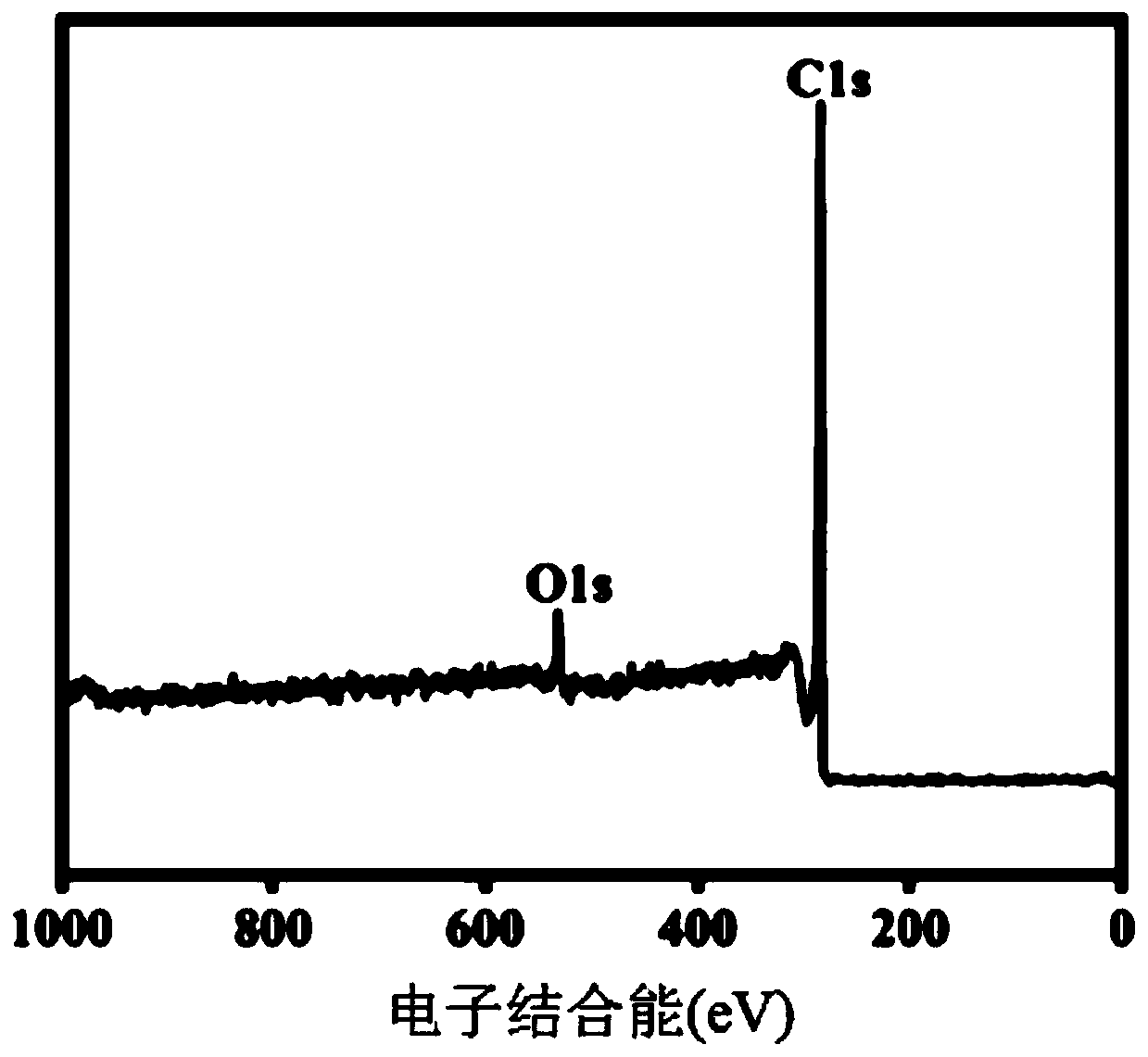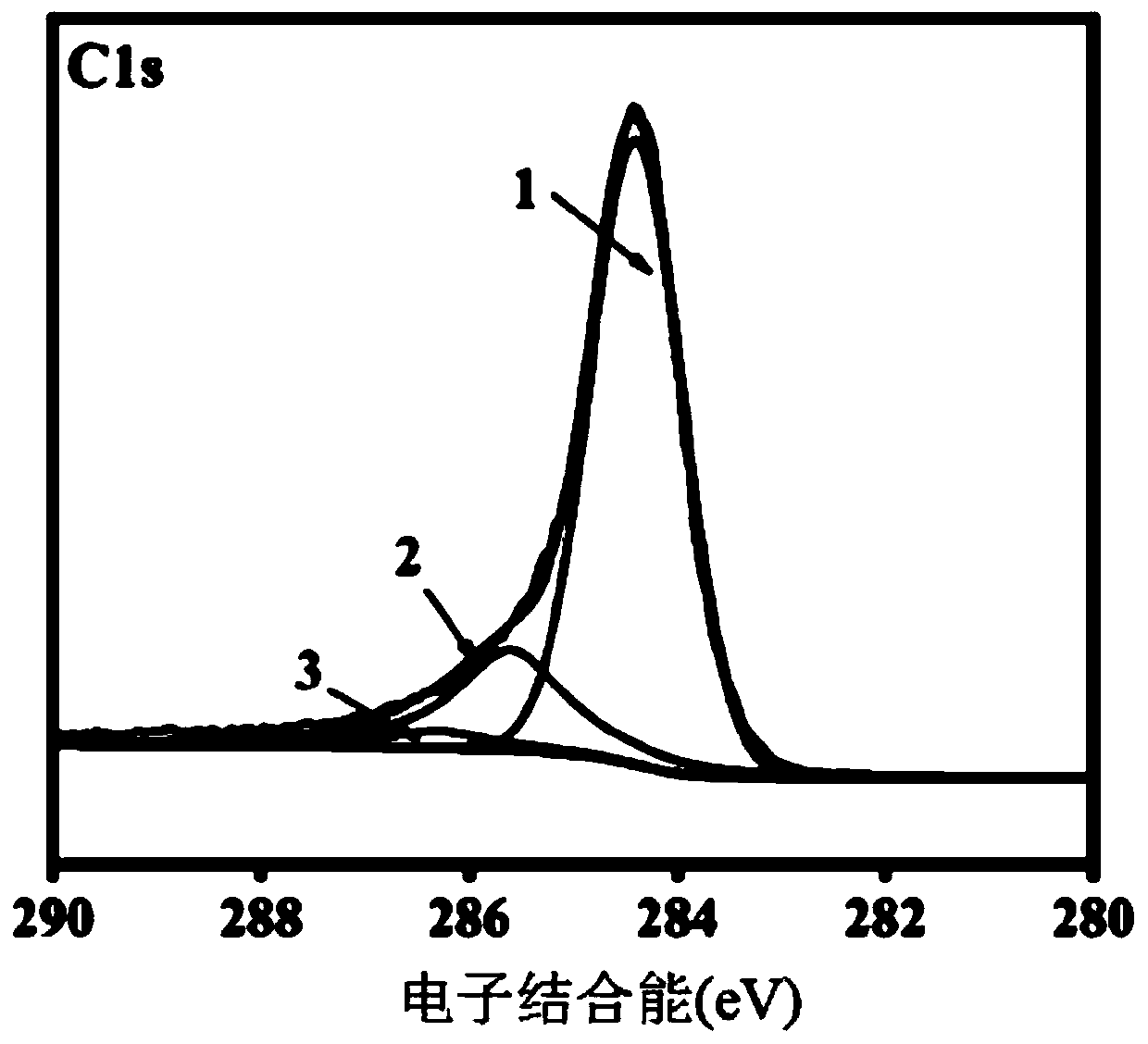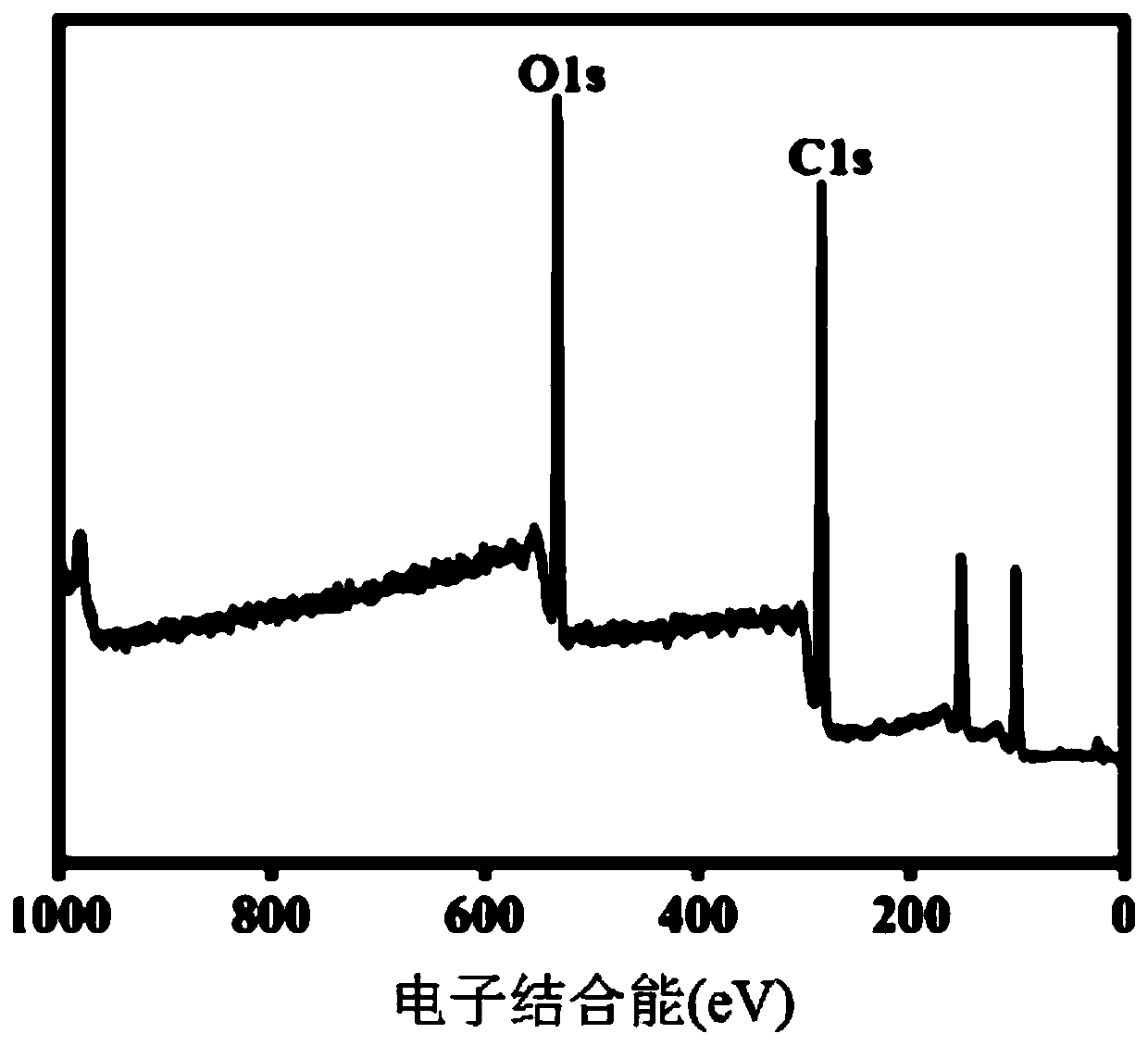Method for reinforcing and toughening composite material by constructing dual rigid-flexible structure on surface of carbon fiber
A technology of toughening composite materials and structural reinforcement, applied in the directions of carbon fiber, fiber processing, textiles and papermaking, etc., can solve the problems of low interface bonding strength, improve interface properties, uniformly transmit and disperse stress, and increase compatibility. Effect
- Summary
- Abstract
- Description
- Claims
- Application Information
AI Technical Summary
Problems solved by technology
Method used
Image
Examples
specific Embodiment approach 1
[0040] Specific implementation mode 1: This implementation mode is a method of constructing a double rigid-flexible structure through the carbon fiber surface to strengthen and toughen the composite material, which is completed according to the following steps:
[0041] 1. Extraction treatment of carbon fiber:
[0042] Using acetone as a cleaning agent to extract the carbon fibers to obtain the extracted carbon fibers;
[0043] 2. Oxidation of carbon fiber:
[0044] Immersing the extracted carbon fibers in a potassium persulfate / silver nitrate mixed aqueous solution to oxidize, then washing and drying to obtain dry oxidized carbon fibers;
[0045] 3. Reduction of carbon fiber:
[0046] Firstly, dry carbon oxide fibers were immersed in THF, and then LiAlH 4 , stirring again, finally adding hydrochloric acid, stirring evenly to obtain reduced carbon fibers; using deionized water to wash the reduced carbon fibers to neutrality, and then vacuum drying to obtain reduced carbon f...
specific Embodiment approach 2
[0058] Embodiment 2: The difference between this embodiment and Embodiment 1 is that in step 1, carbon fiber is extracted with acetone as a cleaning agent, which is specifically completed according to the following steps:
[0059] ① Put the carbon fiber into a Soxhlet extractor filled with acetone, and then heat the acetone to 75°C-85°C, the acetone is continuously distilled and condensed in the Soxhlet extractor, so that the impurities on the surface of the carbon fiber are in the distilled acetone It is continuously cleaned, and the cleaning time is 48h to 72h, and the carbon fiber with the epoxy coating removed on the surface is obtained;
[0060] ②. Dry the carbon fiber from which the surface epoxy coating has been removed at a temperature of 70° C. to 80° C. for 2 hours to 4 hours to obtain the carbon fiber after the extraction treatment. Other steps are the same as in the first embodiment.
specific Embodiment approach 3
[0061] Specific embodiment three: the difference between this embodiment and specific embodiment one or two is: in step two, the carbon fiber after the extraction treatment is immersed in the potassium persulfate / silver nitrate mixed aqueous solution to oxidize, and then cleaning and drying are specifically Done as follows:
[0062] ①. Immerse the extracted carbon fiber in the potassium persulfate / silver nitrate mixed aqueous solution, heat to 60°C-80°C, and then keep the temperature at 60°C-80°C for 1h-2h to obtain the oxidized Carbon fiber; the concentration of potassium persulfate in the described potassium persulfate / silver nitrate mixed aqueous solution is 0.1mol / L~0.2mol / L; the concentration of silver nitrate in the described potassium persulfate / silver nitrate mixed aqueous solution is 0.0001mol / L L~0.05mol / L;
[0063] The volume ratio of the quality of the carbon fiber after the extraction treatment described in step 2 to potassium persulfate / silver nitrate mixed aque...
PUM
| Property | Measurement | Unit |
|---|---|---|
| shear strength | aaaaa | aaaaa |
| impact strength | aaaaa | aaaaa |
| impact strength | aaaaa | aaaaa |
Abstract
Description
Claims
Application Information
 Login to View More
Login to View More - R&D Engineer
- R&D Manager
- IP Professional
- Industry Leading Data Capabilities
- Powerful AI technology
- Patent DNA Extraction
Browse by: Latest US Patents, China's latest patents, Technical Efficacy Thesaurus, Application Domain, Technology Topic, Popular Technical Reports.
© 2024 PatSnap. All rights reserved.Legal|Privacy policy|Modern Slavery Act Transparency Statement|Sitemap|About US| Contact US: help@patsnap.com










